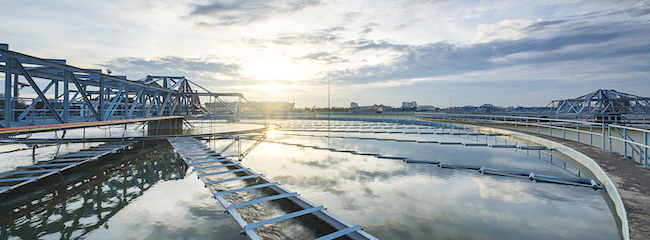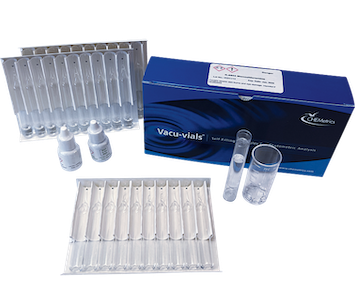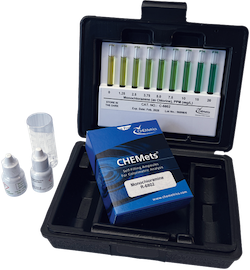Monochloramine As A Disinfectant In Water

Water disinfection is a key step in water treatment for wastewater and drinking water industries. Disinfection renders dangerous pathogens inert, preventing disease. While every water utility has its own method for disinfecting water, chlorine and monochloramine are two of the most common chemicals used for water disinfection. Many people are familiar with chlorine, but awareness of monochloramine is less common. While both chemicals are disinfectants, they are used in different capacities. In this article we will provide some basic information on monochloramine, how it is used, how it compares to chlorine, and how it is measured.
What is Monochloramine?
Chloramines are a group of chemical compounds that contain ammonia and chlorine. Monochloramine (NH2Cl) is the simplest chemical compound of the chloramine group and as a result is often referred to as ‘chloramine’. Monochloramine is a colourless, water soluble liquid. It is commonly added to drinking water to function as a secondary disinfectant in a process called chloramination. Monochloramine is formed by the reaction of free ammonia (NH3 and NH4+) with free chlorine. Dichloramine (NHCl2) and trichloramine (NCl3) will also form if free chlorine remains in solution after all free ammonia has been converted to monochloramine. Dichloramine and trichloramine are less effective at disinfection and impart an unpleasant odour to the water. Therefore, chloramination processes are optimised for monochloramine production.
The Difference Between Primary and Secondary Disinfectants
Municipal water facilities employ disinfection processes based on the characteristics of certain water quality parameters at the site. Sometimes facilities use a disinfection strategy that utilises a primary disinfectant followed by a secondary disinfectant. The primary disinfectant is used to render inactive or kill bacteria, viruses, and parasites, while the secondary disinfectant is used to support the primary disinfectant and maintain a disinfection residual as it passes through the distribution system.
Primary disinfectants do the majority of the disinfection work. They are powerful but typically do not persist in the system to offer continuous protection. The most common primary disinfectant for drinking water and wastewater treatment is chlorine. Adding chlorine to disinfect water is called chlorination. Due to chlorine’s reactive nature, it disinfects rapidly but does not last long within the system. Adding excessive chlorine can affect water smell and taste. Chlorine can also create harmful disinfection by-products (DBP) when it combines with trace levels of naturally occurring organic compounds in the water.
Chlorine treatment levels can be reduced when a secondary disinfectant process is added to the system. Typically the secondary disinfectant is added to drinking water at the last stage of the water treatment process. Many water utilities are using or starting to use the chloramination process to produce monochloramine as the secondary disinfectant. Since it is less reactive than chlorine, monochloramine persists in a system longer but disinfects more slowly. These properties make it a more cost-effective secondary disinfectant than chlorine. It may also reduce DBP formation and does not affect the taste and smell of water like chlorine does as long as it is maintained below a certain threshold.
Where mono-chloramination of drinking water is carried out, it is generally employed on water supplies with either long pipe networks, with raw water sources that are discoloured or high in organic matter, or where there are elevated levels of Trihalomethanes (THMs), a disinfection by-product (DBP), present.
Monochloramine is currently used by 14 out of 25 water companies in England and Wales for a subset of their drinking water supplies. Scottish Water and Irish Water employ monochloramine for drinking water disinfection for selected supplies. Northern Ireland Water does not.
Testing for Monochloramine
Traditionally, monochloramine (NH2Cl) is measured using the N,N-diethyl-p-phenylenediamine (DPD) chemistry. To determine the concentration of monochloramine, the difference between two test results is calculated. The first test measures total or combined chlorine and is performed using DPD plus potassium iodide (KI). The second test measures free chlorine and employs DPD alone. By subtracting the free chlorine result from the total chlorine, an estimate of how much chloramine there is in solution is obtained. However, this measurement technique may overestimate the monochloramine concentration and, therefore, the disinfection status of the sample, since the total chlorine DPD method measures all forms of chloramines, including organic amines, mono-, di- and trichloramine. To maintain efficient disinfection processes, a method of analysis that is specific to monochloramine is necessary.
CHEMetrics New Monochloramine Test Kits
CHEMetrics new Monochloramine Vacu-vials Test Kit (Cat. No. K-6803) and CHEMets Test Kit (K-6802) use the hydroxybenzyl alcohol (HBA) chemistry to selectively measure monochloramine.
 |
 |
Figure 1: K-6803 and K-6802 Photometric and Visual Monochloramine Test Kits
Monochloramine reacts with HBA in the presence of sodium nitroferricyanide to form a green indophenolic compound in direct relation to the concentration of monochloramine in the sample. The results are expressed in ppm (mg/l) monochloramine as chlorine, NH2Cl-Cl2. K-6803 can be used to determine monochloramine in the 0 – 8.00 ppm range with any spectrophotometer that accepts a 13mm cell or with the CHEMetrics V-3000 photometer. When using the V-2000 photometer, K-6803 has a range of 0 – 15.0 ppm. K-6802 is a visual test kit and can measure from 0 to 20 ppm NH2Cl-Cl2.